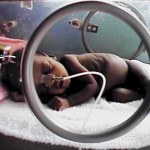
Wow. This is a very interesting bit of history on how the CIA tried to use cats as spies. But as any cat owner knows, cats do not always do what you want them to do when you want them to do it.
Source:
YouTube
A new study shows that walking your dog is good for your health. Here is a YouTube video summarizing the findings of the study:
Let's not forget that walking your dog is also very good for your dog. According to PetMD, some benefits include weight control, keeping your dog limber, controlling destructive behaviors and hyperactivity, and of course building a bond between you and your pet.
If you have a cat however, it might be best to just let the cat walk you as demonstrated in this YouTube video:
I came across this amazing video on YouTube showing a species of octopus found in Northern Australia that is adapted to walk on land:
Image via NOAA/Flickr
Pacific hagfish (Eptatretus stoutii), aka "slime eels", are primitive fish that occupy burrows on the ocean floor. Like earthworms, they have 5 hearts. They have no true eyes, no jaws, nor do they have a stomach. They locate their meals through great senses of smell and touch. In addition to small invertebrates, they are known for consuming carrion that fall to the ocean floor. By consume, I mean burrow into the decomposing carcasses and eating them from the inside out. Ew. Given their dietary habits, it is no surprise they are regularly exposed to little to no…
Image By Jackie - Flickr: Cliche, CC BY 2.0, via Wikimedia Commons https://commons.wikimedia.org/w/index.php?curid=24285298
Proteins are not normally found in the urine of healthy individuals as the filtering units of the kidney prevent the loss of large proteins and smaller ones are typically reabsorbed. A team of researchers at the University of Sao Paulo in Brazil and Ohio State University recently searched for biomarkers indicative of early stages of kidney disease in dogs. They discovered that the urine of dogs in stages 1 or 2 of chronic kidney disease…
Image by Keith Weller, USDA via Wikimedia Commons
Researchers at the International AIDS Vaccine Initiative at Scripps Research Institute have discovered that cows can produce antibodies that effectively neutralize HIV. Thus far, developing an effective vaccine for HIV has been hampered by the ability of the virus to mutate. Some people who have been infected with the virus for a period of years develop antibodies that are able to attack parts of the virus that do not mutate. Cows exposed to HIV, on the other hand, begin developing these antibodies within weeks of…
Samples of fish species from the Poeciliidae family show the diversity in color, fin size and body shape. Kansas State University researchers studied 112 species of these live-bearing fishes and found that males and females evolve differently. Image courtesy of Kansas State University
Dr. Michael Tobler and Dr. Zach Culumber at Kansas State University examined 112 species of live-bearing fish (Poeciliidae) and have made some interesting discoveries about their evolution. Their analyses included information on body shape, fin size, where the species are found and information on…
Image of elderly dog By Jon Sullivan via Wikimedia Commons
The mitral valve is located between the left atrium and left ventricle of the heart where it serves an important role in preventing backflow of blood into the left atrium as the ventricle contracts. Mitral valve prolapse, a condition that occurs in humans, is characterized by regurgitation of blood into the left atrium, which receives blood from the lungs. Hence, this condition can lead to congestive heart failure as blood backs up in the lungs.
Scientists at Tufts University, Cummings School of Veterinary…
Wikimedia, Whatiguana
Preeclampsia is a serious complication that develops in about 5-8% of pregnant women. It is characterized by elevated blood pressure and is typically accompanied by excess protein in the urine (a sign of kidney problems). Symptoms often (but not always) return to normal after delivery of the baby.
Elabela is a recently discovered micropeptide secreted by the placenta in mammals. It is also found in fish where it plays a role in development of the heart. A recent study published in Science showed that mice that do not have this…
Photo of an African Green Monkey by Sharp Photography, via Wikimedia Commons
Humans are not the only primates that spontaneously develop hypertension. A new study published in the American Journal of Physiology - Regulatory, Integrative and Comparative Physiology, examined the development of spontaneous hypertension in African Green Monkeys (Chlorocebus aethiops sabaeus; aka: vervets). The team measured blood pressure in 424 adult monkeys and found that 37% had high blood pressure (SBP: 172.0±2.2 mmHg) and an additional 18% had borderline hypertension. Like humans, the prevalence of…
Photo by Mike Blyth via Flickr Commons
Surfactant is a lipoprotein substance that is secreted by special cells located in the alveoli of our lungs. The alveoli are the grape-like structures where gas exchange happens. Without surfactant, these alveoli would collapse and prevent gas exchange.
Drawing of alveoli by Patrick J. Lynch, medical illustrator (Patrick J. Lynch, medical illustrator) CC BY 2.5 via Wikimedia Commons
Babies born prematurely often suffer from respiratory distress syndrome because their lungs do not make enough surfactant. Now researchers at the Karolinska…
Photo by Donnie Ray Jones from Flickr creative commons.
A recent study published in Microbiome from researchers at the University of Alberta shows that babies from families with pets had nearly two-fold increases in the amount of two specific microbes in their guts, Ruminococcus and Oscillospira. These particular microbes are associated with reduced risks of developing childhood allergies as well as obesity. According to study author Dr. Anita Kozyrskyj, “There’s definitely a critical window of time when gut immunity and microbes co-develop, and when disruptions to the process…
Photo of a Wagler's pit viper By Gunawan Kartapranata (Own work) [CC BY-SA 4.0 (http://creativecommons.org/licenses/by-sa/4.0)], via Wikimedia Commons
Platelets are important in the formation of blood clots. For this reason, antiplatelet medications are commonly prescribed for people at risk of developing blood clots, or who have already developed one. Many of the medications that are currently on the market to treat blood clots come with a risk for excessive bleeding and reduced platelet numbers. Researchers have now discovered an effective antiplatelet protein in snake…
Image of a variety of bird eggs from Internet Archive Book Images, via Wikimedia Commons
Ever wonder why bird eggs are shaped the way they are and what drives the variations in egg shapes across species? I never really wondered that either until I saw an article in Science that explained a possible reason...then I just HAD to know. Some theories had been proposed suggesting that their shape prevented eggs from rolling out of nests or otherwise sustaining damage, and so on. According to the new study, the shape of a bird's eggs may be related to their ability to fly…
Photo of zebrafish housed at a research institute. By Karol Głąb CC BY-SA 3.0. via Wikimedia Commons
Who would have thought tiny fish could lead to big advances in medicine? Zebrafish (Danio rerio) and mammals have similar anatomy and physiology of the brain, eyes, gut, and cardiovascular systems. Some of the reasons why these fish are good models to understand cardiovascular physiology were recently explored in a new article published in Physiological Reviews.
Animal models are used in research that seeks to understand both normal physiological mechanisms as well as mechanisms…
Photo of a kea by Mark Whatmough - Milford Sound, Key Summit, The Divide, Queenstown, CC BY 2.0, via Wikimedia Commons
Most of us have heard the phrase: Laughter is contagious. When we hear other people laughing, we often smile even if we have no idea why they are laughing. Dr. Sophie Scott from the University College of London and her colleagues played both positive sounds (like laughter) and negative sounds (like retching or screaming) to subjects and found the sounds activated the premotor cortical region of the brain. This area of the brain is responsible for preparing facial…
Estradiol is the major estrogen in humans. Chemical structure by NEUROtiker (Own work) [Public domain], via Wikimedia Commons
I came across an article published in Physiological Reviews with a title so irresistible (Estrogens in Male Physiology), I just had to read it. While I knew that males have estrogen, this article impressed me with the numerous things estrogens are associated with, some of which were new to me and highlight how important estrogens are to male reproductive and non-reproductive physiology.
As early as the 1930's researchers discovered that stallions had…
Photo of zebrafish (Danio rerio) by Azul (Own work) [Copyrighted free use], via Wikimedia Commons
We all know that aerobic exercise is good for us because it helps improve muscle function and our ability to move well. For fish, aerobic exercise helps animals escape predators, catch prey as well as improve reproduction success. When we exercise, our muscles adapt by altering the metabolism of energy, the way calcium is handled as well as the type of contractile proteins present in the muscle. Together these changes alter how muscles contract. Histone deacetylases (HDAC) are…
Researchers in Brazil are testing a new way to treat burn victims. They have found that tilapia skin is rich in collagen which helps the damaged skin heal better than standard wound dressings and eliminates the need to wait for donor tissue. Check out these videos from YouTube describing this radical new idea in burn therapy:
Photo of flamingos by Cash2013 - Own work, CC BY-SA 3.0, https://commons.wikimedia.org/w/index.php?curid=31647429
Scientists think they have discovered the reason why flamingos (Phoenicopteridae) stand on one leg. In a new study published in Biology Letters scientists studied both live flamingos and carcasses. What they found was that standing on leg requires less energy or effort than standing on both legs. In fact, the researchers found carcasses could be made to stand on one leg quite easily. As stated in the article: "By contrast, the cadaveric flamingo could…

